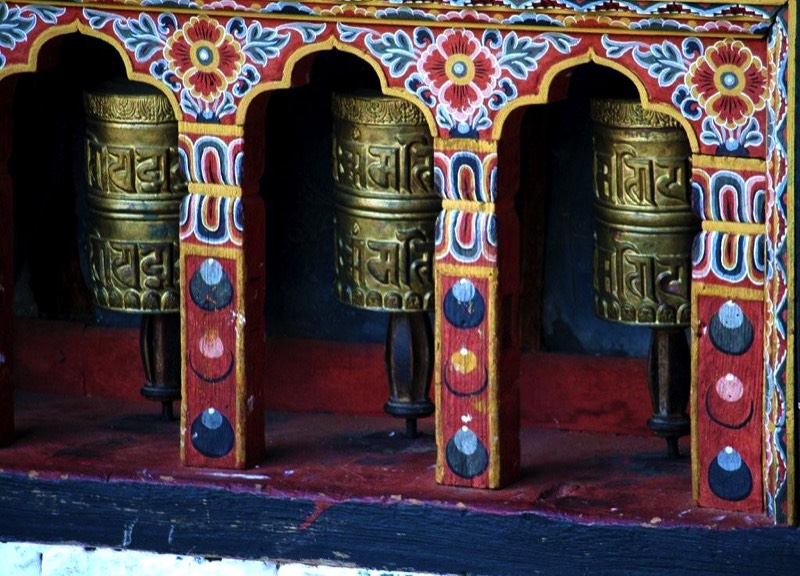
All foreign visitors to Bhutan must have a valid passport and entry visa issued by the Ministry of Foreign Affairs in Thimphu. Visa clearance is arranged during the booking process, and prior to your departure for Bhutan. Flights to Bhutan are by Druk Air, the national carrier, and tickets cannot be purchased without visa clearance. Upon arrival in Bhutan your visa is endorsed and passport stamped. It is required to bring along 2 passport-size photos.
Language
The national language of Bhutan is Dzongkha, although there are different dialects spoken throughout the country. English is taught in the schools and is spoken in most towns.
Currency
The official currency is the Ngultrum Nu., which is at par with the Indian rupee. You can exchange US dollars and travelers checks at Paro Airport on arrival, banks in Thimphu (banking hours are M-F, 10am-1pm), and in the larger hotels. Credit cards are not generally accepted, so it is important to bring US cash, or a combination of US cash and travelers checks. There are no ATM's or credit card cash advances in Bhutan. Since most tour arrangements are required to be prepaid, it is mainly personal expenses (drinks, shopping, laundry, etc.) that need to be considered.
Phones & Communications
Most towns in Bhutan have telephone and fax services. Mobile phone packages, which contain a SIM card and phone number, are available for purchase. Internet access is generally available in most places.
Climate
Bhutan has a changing climate due to its various seasons and elevation levels. The higher valleys in Spring (Mar-May) have average daytime temperatures around 70F, and cooler nights. The Summer runs from Jun-Aug, with temperatures climbing to 84F or so. The rainy season starts in July and continues until September. The Autumn months (Sep-Nov) are known for mild weather and clear skies, and are a popular time for trekkers. In Winter (Dec-Feb) temperatures drop to a high of 60F during the day, and below freezing at night. Expect frost throughout much of the country in the winter, and snow in the higher elevations. The south part of Bhutan has a hot, humid climate, with year-round temperatures between 60F and 90F, and even higher in the valleys during the summer. The Spring and Autumn are considered the best times for a visit to Bhutan. Autumn has clear skies, and offers beautiful views of the Himalayan Mountains, while Spring sees colors return to the valleys, and beautiful flowers in bloom. Treks are not always possible in the off-season, but it should be said that Bhutan is a year-round destination and each season offers different advantages.
Electricity
The voltage in Bhutan is 220V. A converter is required for U.S. appliances rated at 110V. A universal adaptor is also required due to the different plug types.
Time Zone
The time zone is GMT +6, or 11 hours ahead of U.S. Eastern Standard Time. Daylight savings time is not practiced in Bhutan.
Tipping
Tipping is not required in Bhutan but is widely appreciated to recognize good service. It is customary to tip your tour guide and driver.
Health
There are no vaccinations required to enter Bhutan, unless you are arriving from an infected area. It is always a good idea to check with your doctor prior to traveling internationally to make sure all your boosters are up to date, and to determine if any vaccinations are recommended. Make sure to bring along any essential medications as there is no guarantee that they will be available locally.

